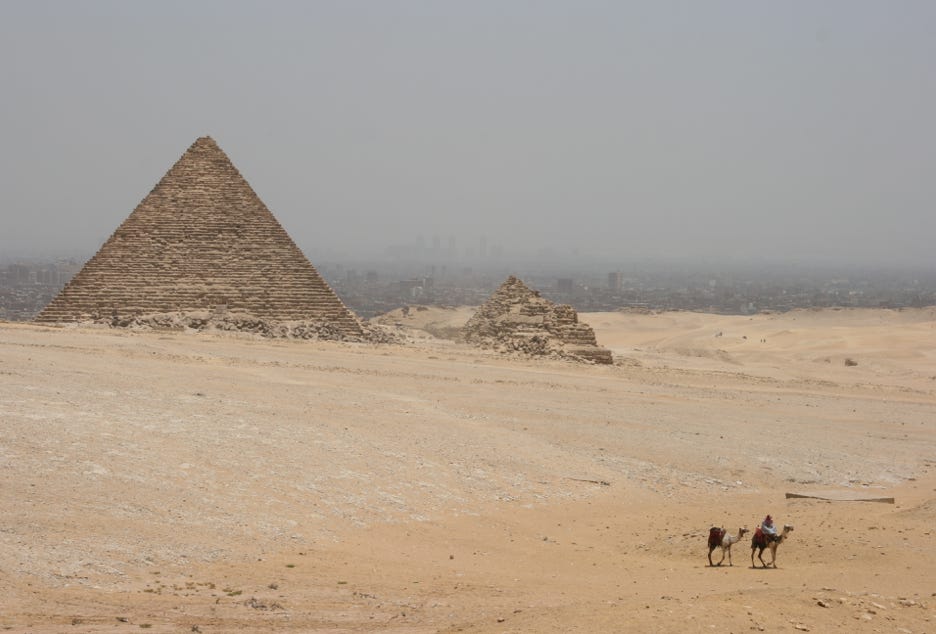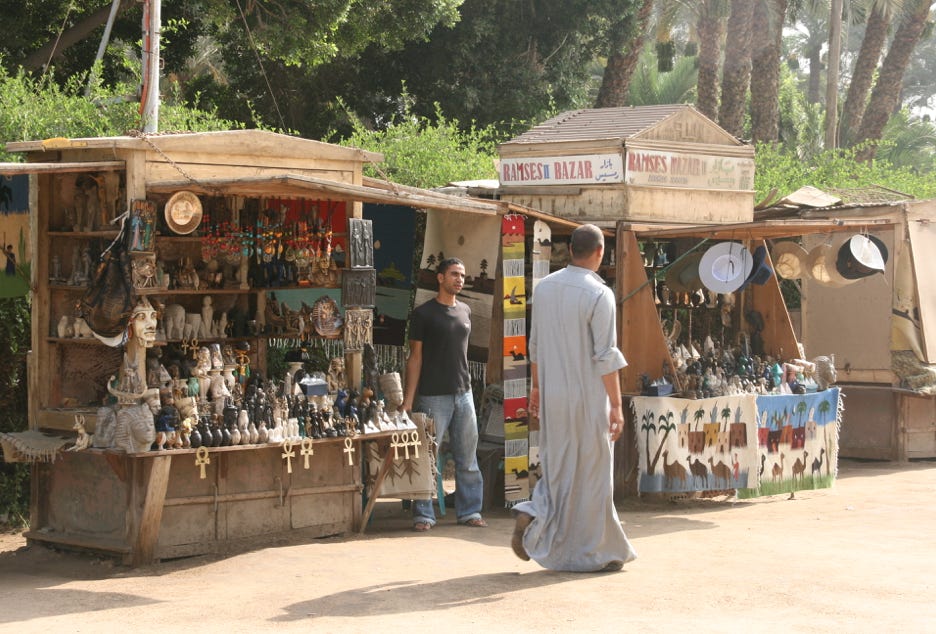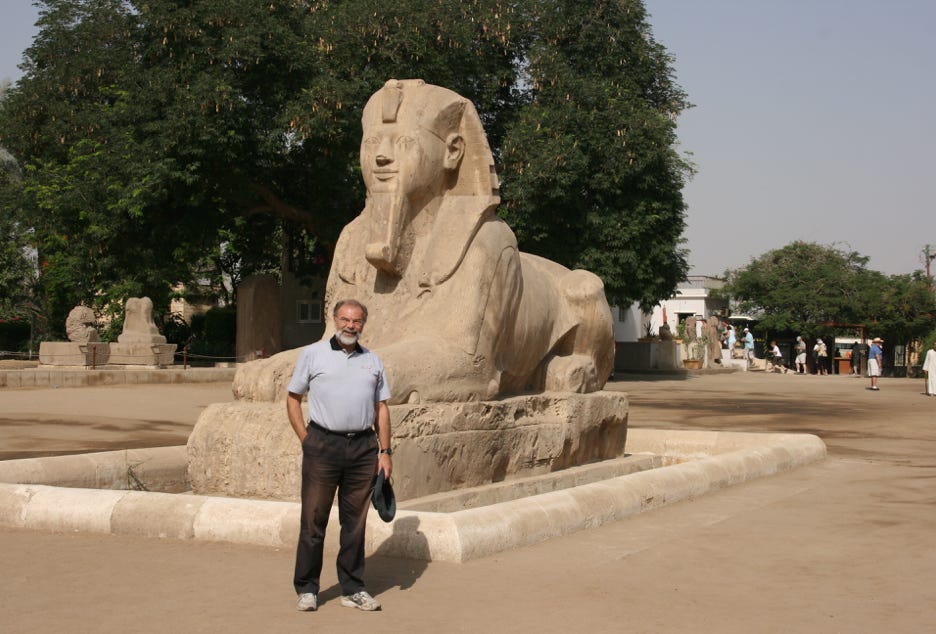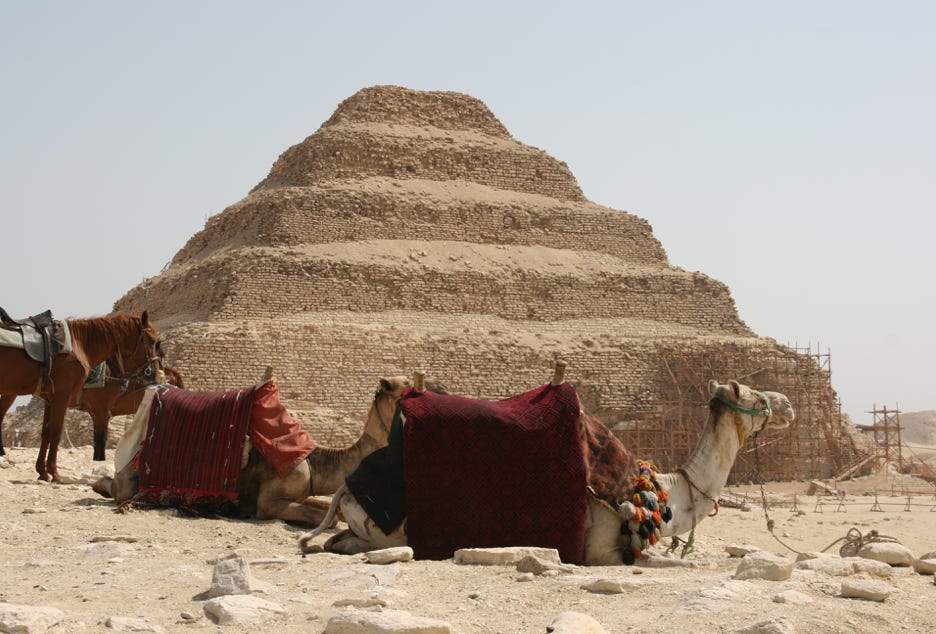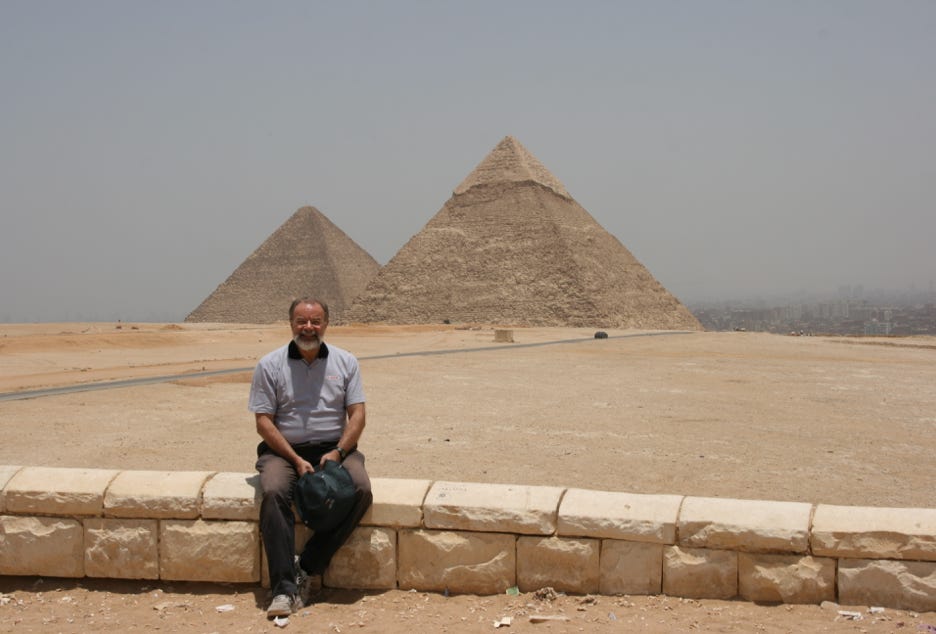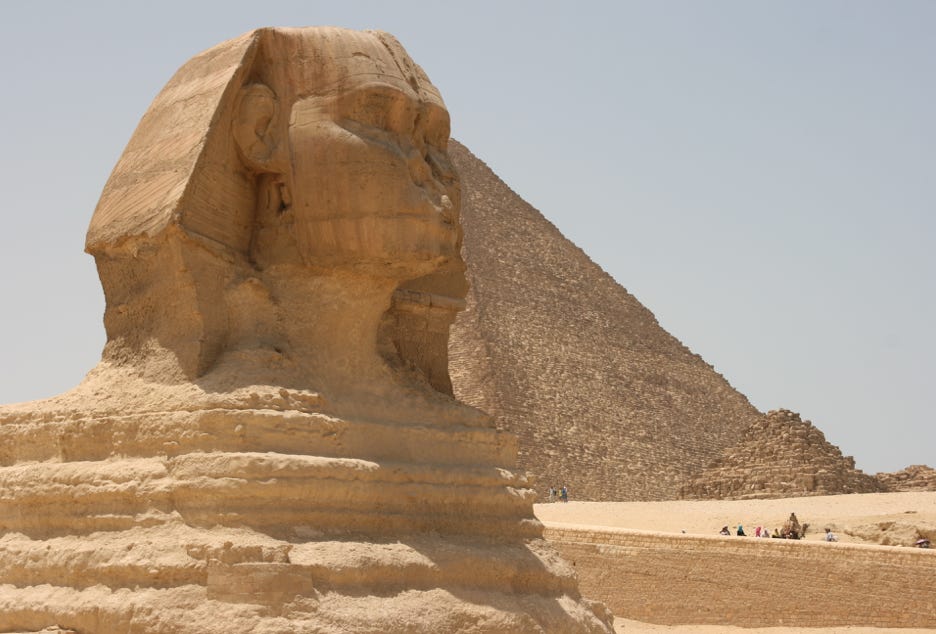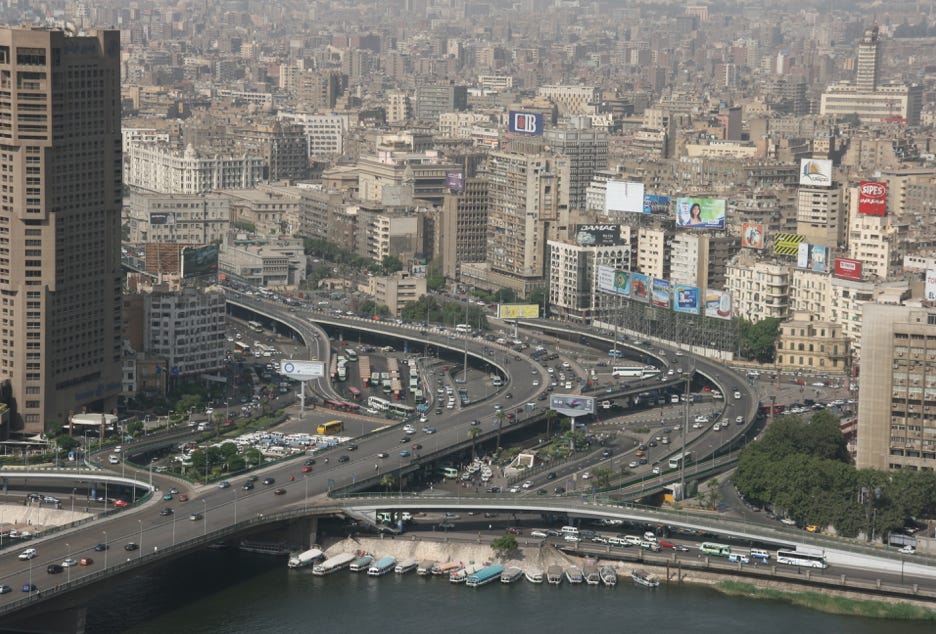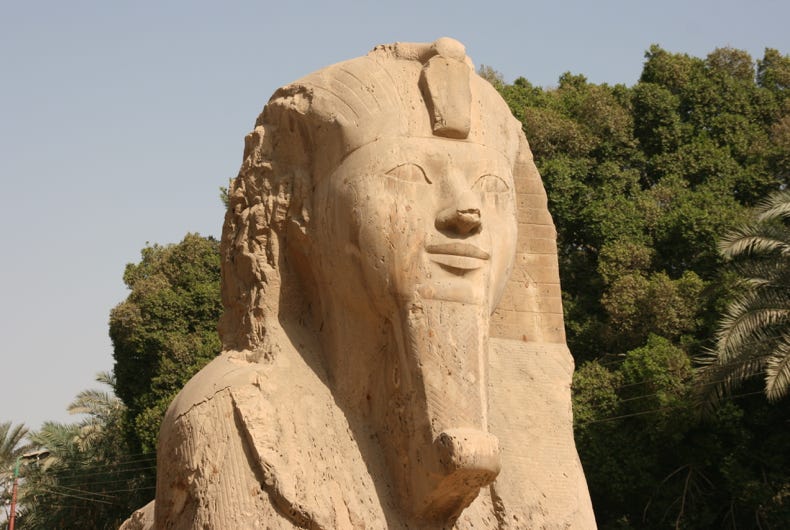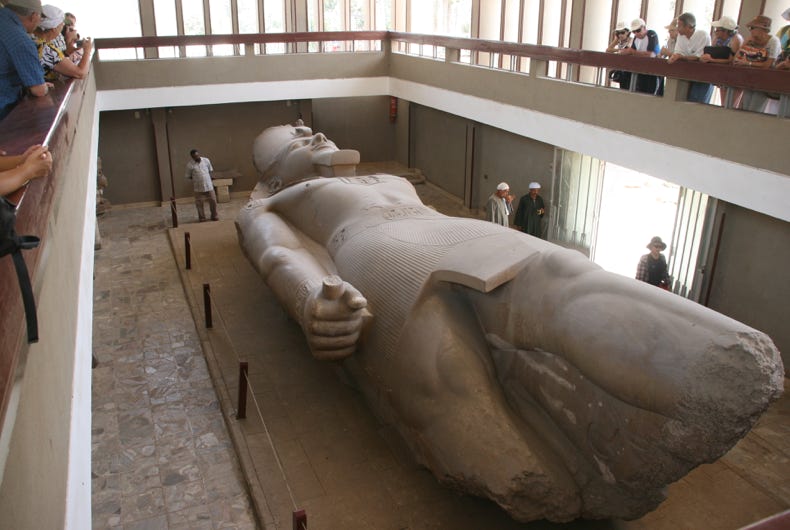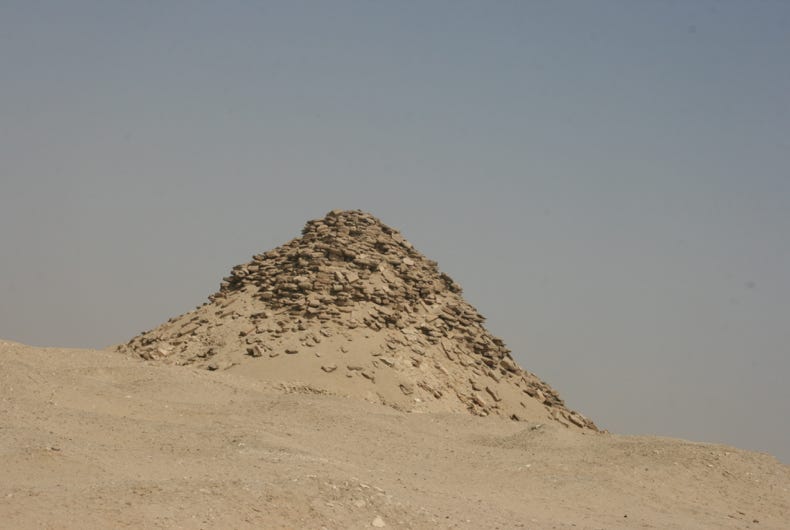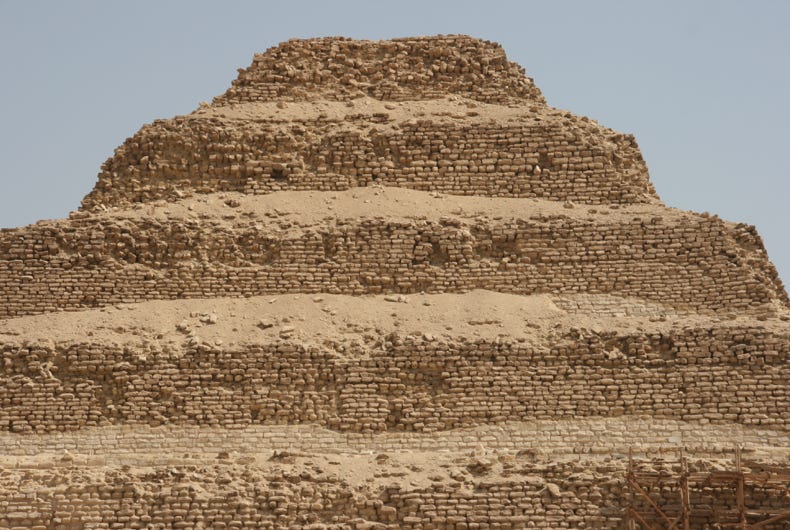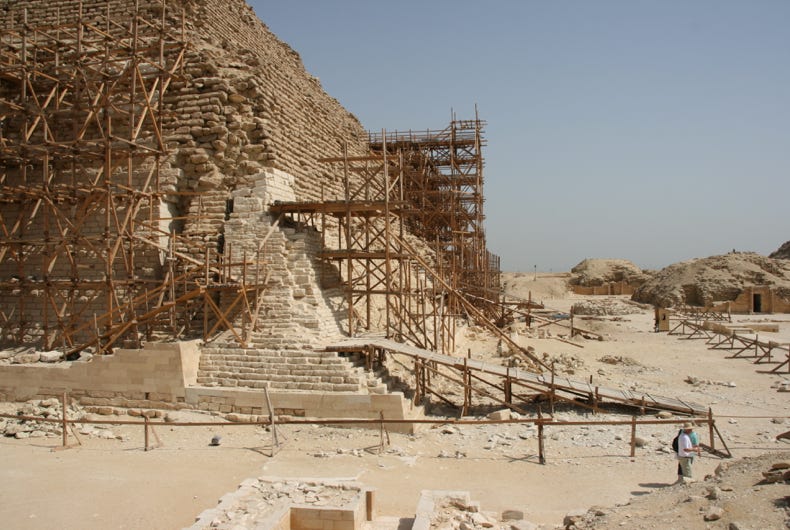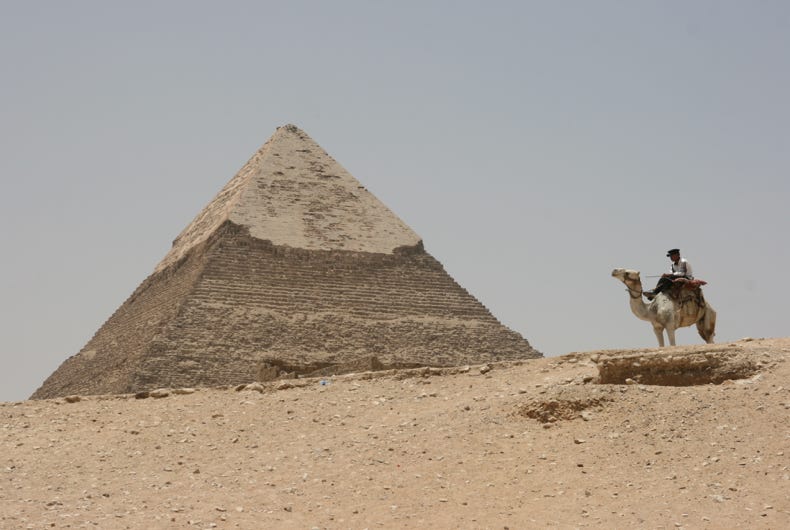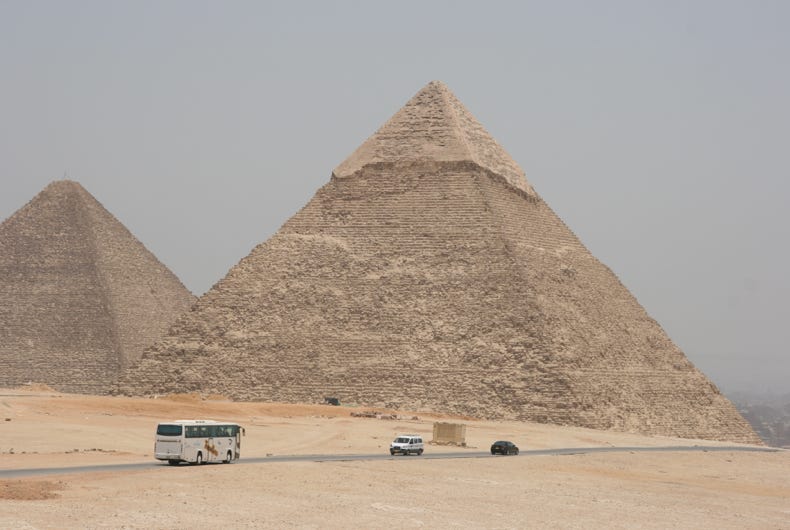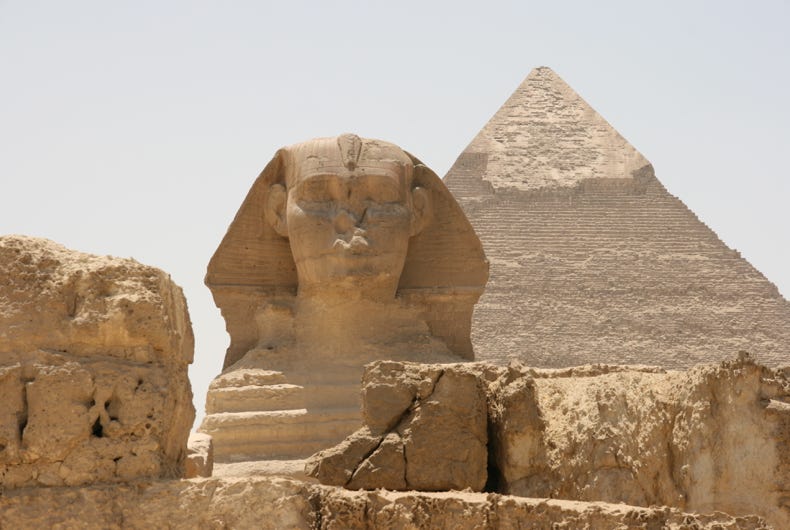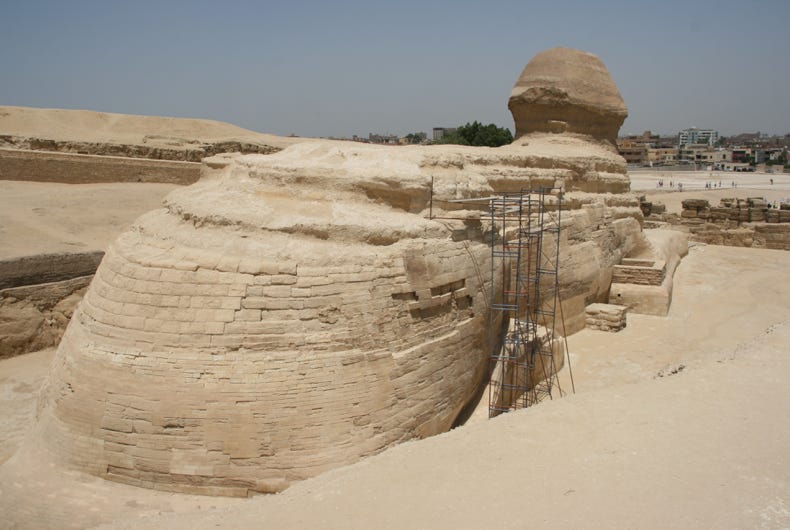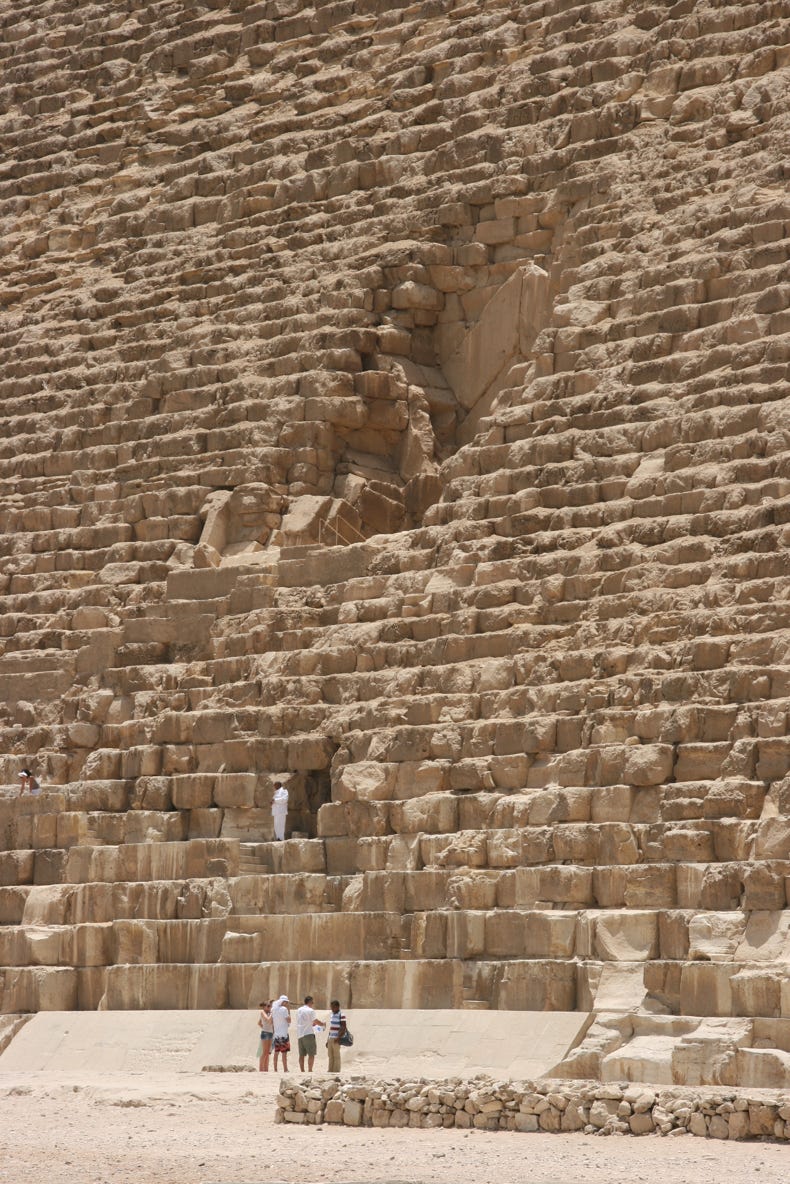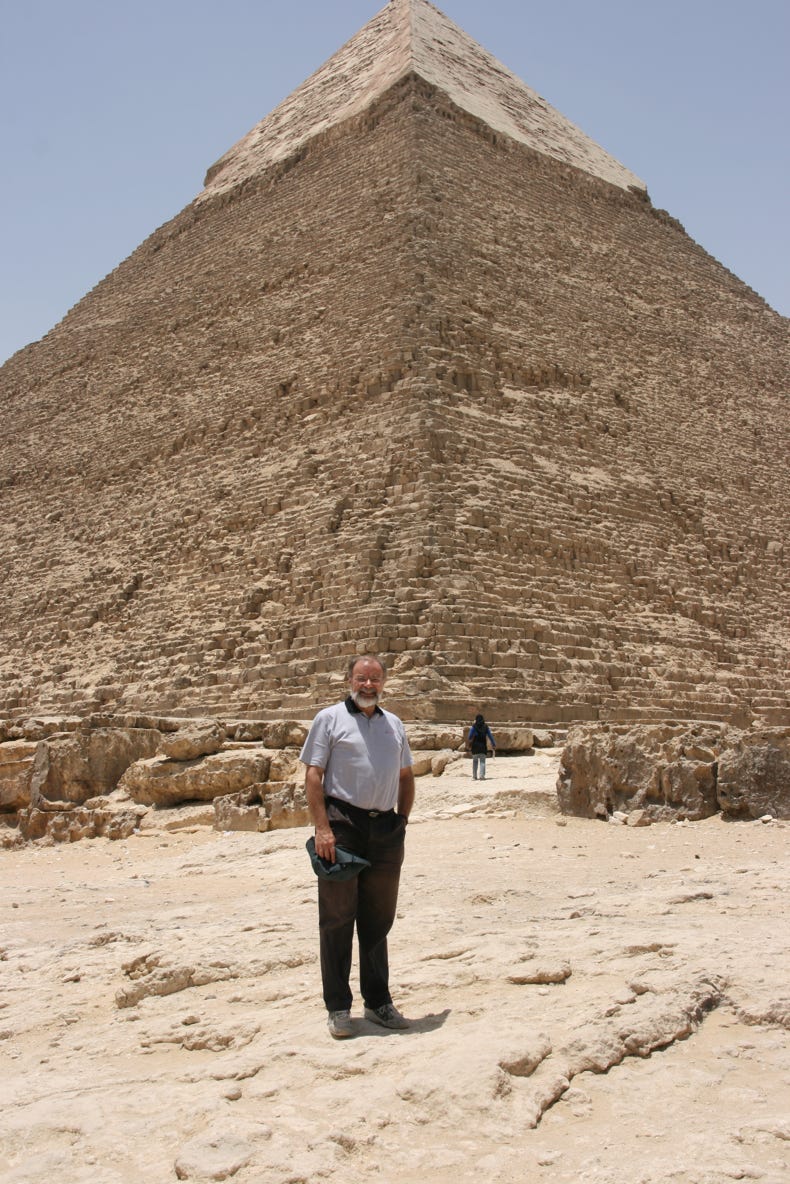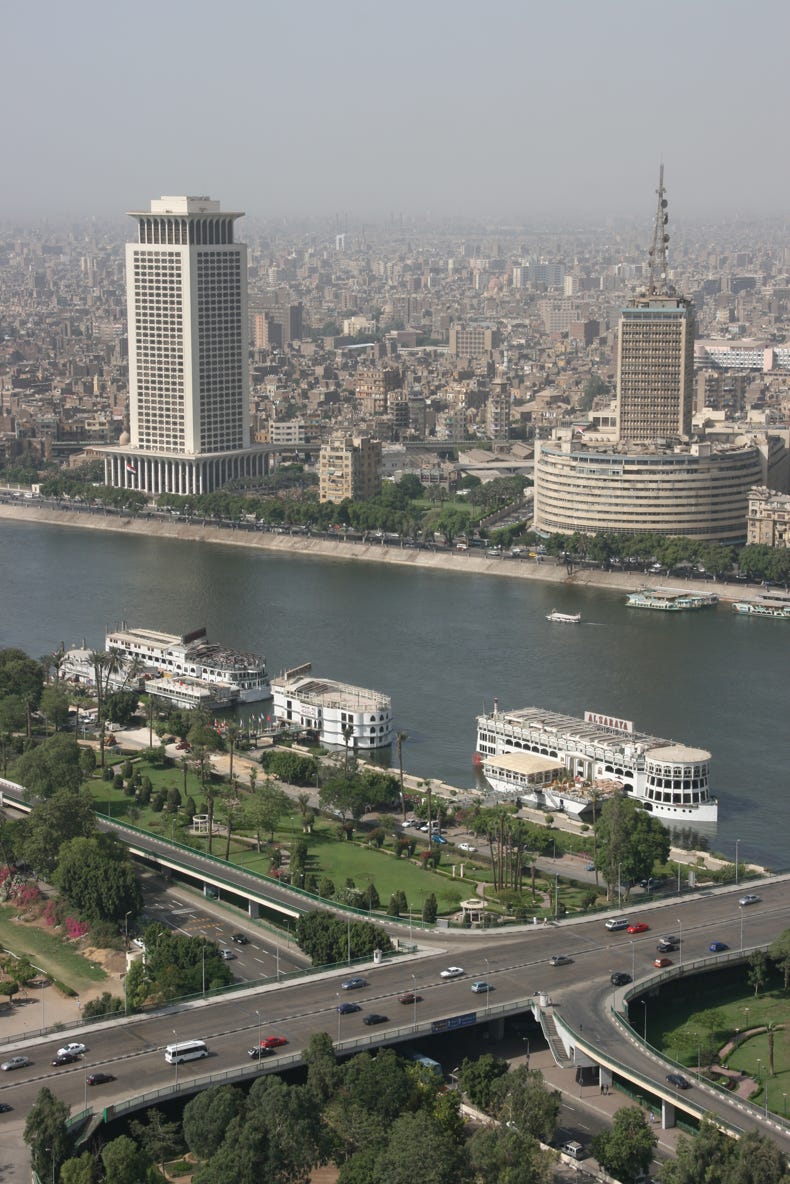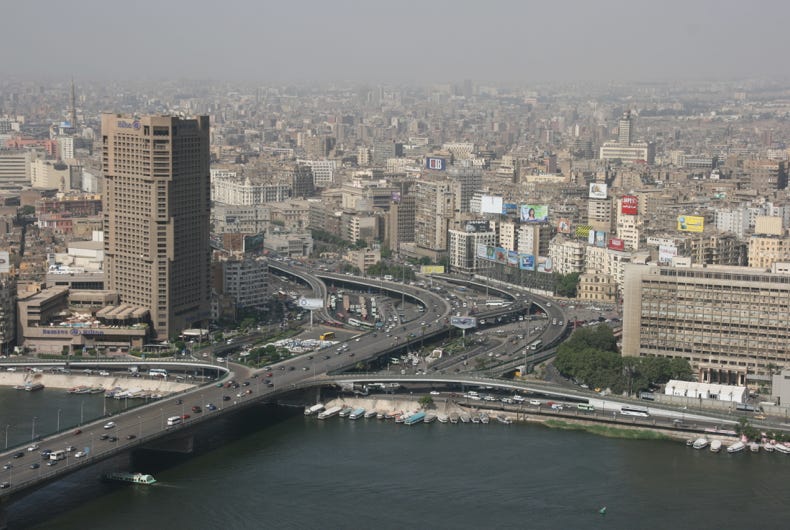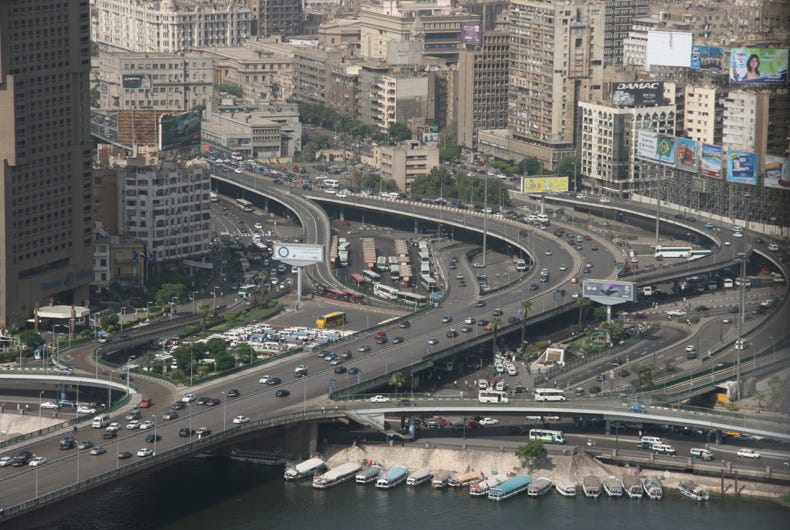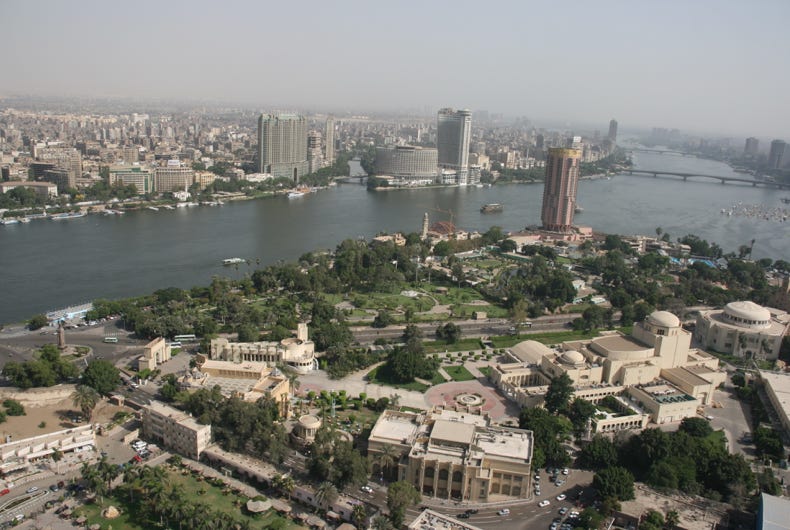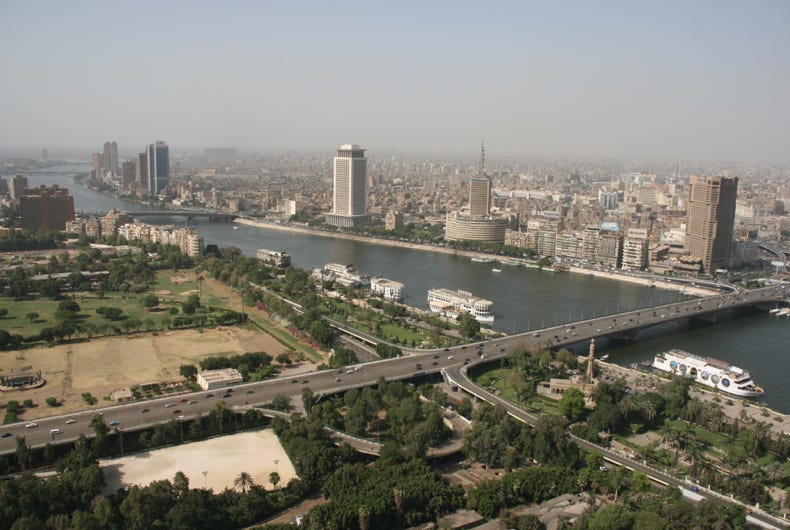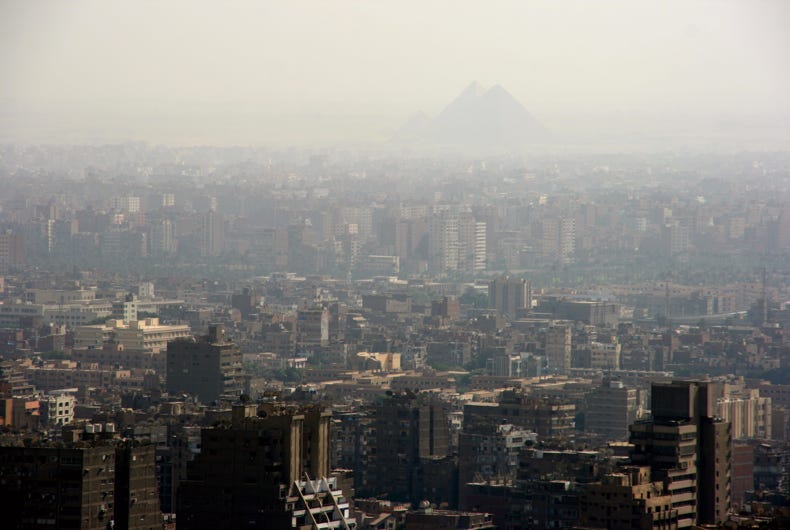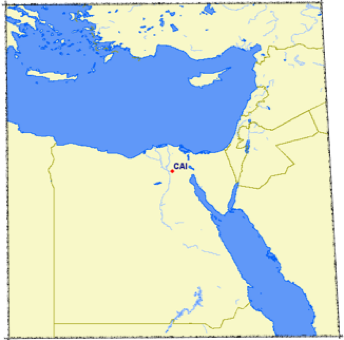


Egypt is experiencing a heat wave, and a heat wave in an Egyptian desert summer is serious business. Fortunately, the temperatures today were a little lower than yesterday, with a maximum of ‘just’ 37°C. This figure, of course, was the official temperature in the shade. I am quite certain that the temperatures outside in the desert sun were much higher. As evidence of the extent of the heat, while I was walking near the pyramids at Giza early this afternoon, the glue that binds the soles of my shoes to the upper part of the shoes melted and the soles simply fell off. Fortunately the shoes were old so their loss is not great, but the walk became even hotter without the insulation effects of the soles beneath my feet.
My day today was more on the tourist trail than yesterday, but in Egypt it is not always easy to avoid the tourist trail for anyone who wants to see some interesting sights. The focus of my day was ogling at pyramids – a common pastime for visitors to Egypt.
My first stop was Memphis; not in Tennessee but about 24 kilometres south of the centre of Cairo. Cairo is a relatively young city in Egyptian terms, having been established as a Muslim city in 969AD. In the days of the pharaohs, Egypt’s capital was Memphis.
Today, there is little left of the ancient city apart from some statues that have been arranged conveniently in a small courtyard museum. There are a few huge statues of the famous pharaoh Ramses II, and a very impressive sphinx (see photo to the right). The sphinx is the second largest in Egypt (the largest being at Giza), but is remarkably well preserved, having been made from alabaster rather than the softer limestone used at Giza.
My second stop was a few kilometres away at Saqqara (sometimes spelt Sakkara). Saqqara is where pyramids were ‘invented’ as funereal structures. Early pharaohs were buried underground with a stone slab covering. However, the graves were often attached by robbers and hungry jackals, so the concept of assembling stepped layers of rock coverings emerged. As this idea grew, the concept emerged of burying the pharaoh inside the constructed structure rather than placing the bodies underground.
The central sight at Saqqara was the Step Pyramid of Zoser, which was built in about 2625BC, making it the world’s oldest stone monument and the first pyramid. However, this was just one feature in a 7 square kilometre area of pyramids, tombs and temples.
Having wandered around the Step Pyramid for a while, I then walked some distance to enter two of the structures, the small Pyramid of Titi and the Mastaba of Ti. (Word of the day: ‘mastaba’ = a kind of ancient Egyptian tomb that is a flat-roofed, rectangular structure for burying eminent people such as scribes, administrators, generals and sacred animals. The mastaba had some wonderfully fine bas relief sculptures of everyday life in ancient Egypt, some of which remarkably still contain traces of the original ochre paints used to colour the pictures.
A ten kilometre drive then took me to Giza, which lies on the outer western edge of Cairo metropolis. Like Saqqara, Giza is situated on the western side of the Nile River, and this situation was quite deliberate. The ancient Egyptians worshipped the sun, and the sun god was named Ra. Because the sun rose in the east and set in the west, the east was seen as representing new life, whereas the west was seen as representing death.
The huge pyramids at Giza (three large one for pharaohs, plus six smaller ones for wives) are between 100 and 200 years younger than those at Saqqara. Their scale, however, is almost an order of magnitude greater. For example, the Great Pyramid of Khufu (also known as Cheops) was 146 metres high when it was first built, although the removal of the outer layer of limestone and subsequent erosion has reduced the height to 138 metres. Nonetheless, the pyramid remained the tallest structure of the world for 3,800 years (until the spire of Lincoln Cathedral was built in the 1300s).
After wandering around the pyramids for a couple of hours, it was time to descend closer to the urban area of Giza where the sphinx guards the approach to the middle pyramid, the Pyramid of Khafre. Unlike the smaller sphinx at Memphis, the sphinx at Giza was carved almost entirely from an outcrop of limestone that remained after the construction of the Pyamid of Khufu. The sphinx is quite heavily weathered – not surprising given that it is 4,600 years old and carved from limestone. For example, the nose has been lost, being the most exposed and thinnest part of the carving.
Having explored Saqqara and Giza, it was time to return to Cairo. I returned at about 3:30 pm, and after a much needed drink of water, and took the short walk to Cairo Tower.
With a height of 187 metres, Cairo Tower is the tallest structure in the city, and offers fantastic views across the vast sprawling metropolis. With a population of about 18 million people, Cairo is one of the world’s megacities, and the from the summit of Cairo Tower it is easy to believe.
Much of Cairo is a high density mix of ageing high rise buildings. At street level the city presents a somewhat grimy and decaying appearance, but from the top of Cairo Tower it looked magnificent. The Nile River and some nearby parklands give the city some much-needed splashes of colour, and the incessant amplified calls to prayer and sermons which are almost deafening at street level become part of the exotic hum of this vibrant city from the Tower.
All-in-all, it was an enjoyable day - but one that definitely very hot. Cairo’s forecast temperature for tomorrow is 41°C and the day that after is expected to reach 44°C. I’ll be going upcountry tomorrow where the temperatures are even higher. I expect that I’ll notice.

